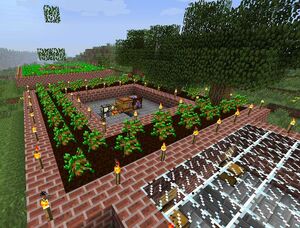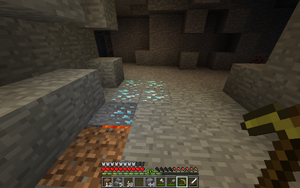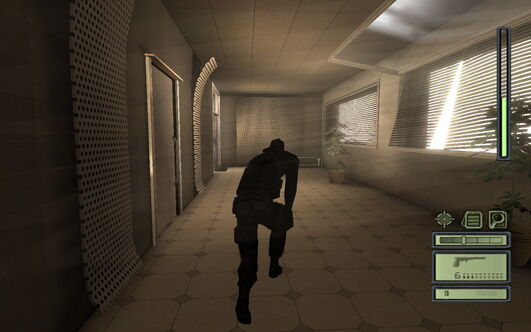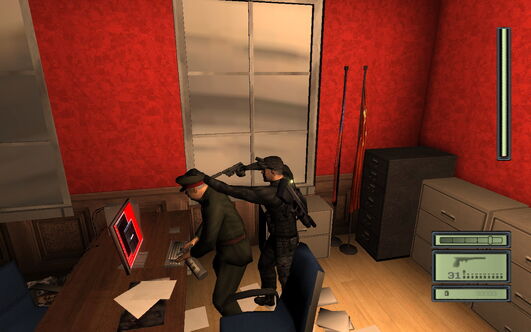“In every job that must be done there is an element of fun.” – Mary Poppins

It used to baffle me as a child. It seemed almost every weekend my parents wanted nothing more than to stay home and work around the house. My dad would mow the lawn. My mom would toil away on her hands and knees, grasping for weeds in one of her five or six gardens as a heap of roots and other organic detritus collected by her side. I, of course, thought that this was the most boring thing on earth. Who were these people? Why stay home when we could … when we could … we could go to the mall?
If you were to go to my parents' house today and observe the humble magnificence of their property, you might be able to understand — better than I was able to — why my parents preferred their weekend work. I think it's even nicer now than when I lived there. They've got a greenhouse. A pond. There are still a bunch of gardens and places to sit around during the nice summer weather.
But it's funny. If there's one thing that has remained true about my parents' two-and-a-half-acre spread of land, it's that it has never been static. Slowly but surely, it's always changing. Not only are the state of the plants and trees in constant flux (my parents' never-ending campaign against the creeping blackberry vines used to suffer crippling setbacks almost every year) but even the manmade features are impermanent. Once ambitious gardens fall to ruin while new ones thrive. Wooden birdhouses disappear, replaced later on by homemade bells. My dad's first attempt at a pond was for years just a gaping hole in the ground before getting filled back in. These were the types of gradual and sudden changes I didn't notice and appreciate quite as much until I went off to college and started coming home only every few months. My parents' work is never finished. The prominent features change over time as their resources and focus shift between various projects.

I guess I've noticed a sort of parallel phenomenon watching my wife play Minecraft Xbox 360 Edition. It's great. Every day last week I would come home from work and get to hear about all of the mini emergent adventures my wife had experienced that day. Her intrepid mining expeditions. Her taming of a huge pack of dogs and getting lost for hours in the wilderness. Better yet, I got to see the latest iteration of her ever-expanding “home.” I got to watch over time as her survival cabin at the top of a hill became more of a faux-house concealing her much larger bunker underground. Pretty soon her bunker had expanded to encompass most of the hill. Then one day I came home to find that the hill had basically become like one big cobblestone castle. And it all happened one block at a time, without an instruction manual.
I recently watched an interview snippet with Sid Meier, creator of the Civilization series and many other highly regarded computer games. He spoke in pretty plain language about the distinction between fun and work when designing games. If something in his games begins to feel too much like work, they have the computer do that for you. Imagine the tedium if, as opposed to simply commanding your Civilization workers to improve tiles, you had to somehow do that work yourself. Imagine if your peons in Warcraft required that you click continuously on each tree you were making them harvest. It would detract from getting to focus on the bigger picture, the satisfaction of the macro-management.

How interesting then to consider a game like Minecraft, in which almost the entire playing experience consists of simulated labor, and not the kind in which you simply command and watch your minions but rather one that has you play as your own lone minion in a world all your own (which encompasses both master and minion, I suppose). It's essentially a do-it-yourself game. It involves cutting down trees, shoveling dirt, hunting for food, tilling soil, building tools, and moving thousands of blocks from one place to another. I jumped into the game for a little bit the other day and helped my wife completely level half of a mountain. Talk about landscaping. We picked and picked and picked while the sun was up and retired to bed at nightfall. In human time it probably took about forty minutes or so.
What the playing experience doesn't include is the physical strain — the soreness of muscles, the shortness of breath. There's no cleanup involved, no tracking mud into your home at the end of the day. Still, I would wager money to guess that if Minecraft did not make the player “work” for those resources, so to speak, it wouldn't have the millions of players that it does. Minecraft is much more than a game of infinite legos. It really is about the work, or the idea of work.
Because the human species craves work! Rather, they crave the accomplishment that emerges as a result of the work. People enjoy Minecraft for very much the same reason they enjoy sweets. It's biological. A delicious fatty food contains so many calories in such a condensed form that it's almost impossible to pass up. It eliminates the need to forage, the need to hunt. What an incredible opportunity! This is why raccoons pick through the neighborhood Dumpster. It's why the squirrels load up on free food from my parents' backyard bird feeder. The intense desire for accomplishment through work is just as inherent to the human species as is the need for physical sustenance. But whenever an opportunity arises that appears to satisfy what we need, or which appears to eliminate the barriers separating us from those things that we need, that opportunity is very difficult to resist. Minecraft eliminates the unpleasantries of work while retaining its core essence, which is precisely what makes it such a near perfect substitute.
That's really what a lot of video games do so well to begin with — reward the player with a sense of accomplishment. Usually, however, both the reward and the means of obtaining the reward are completely arbitrary. It could be doled out however the designer sees fit. Complete a level, advance to the next one. Defeat a boss, enjoy a cutscene. Solve a puzzle, gain a collectible star. Earn a set number of experience points and level up. Minecraft, by contrast, does not seem nearly as concerned with having to impose a set of goals and objectives upon the player (other than staying alive, perhaps). It says to the player, “This is your world. These are its rules. Do what thou wilt.”
My wife could just as easily venture off into the wilderness, perhaps go exploring the mysterious nether world for the first time. For now she still seems to find just as much enjoyment staying close to home, steadily improving the scenery within rendering distance of her glimmering tower, plucking away at her ever-changing list of pet projects. So much work to do!
It's pure indulgence, sure. Isn't any game? But there are things that Minecraft and other games allow us to experience that we would not otherwise, at least for the foreseeable future, get to experience. Take owning a house, for example. My parents might have had the benefit of purchasing property in the 1970s. They were able to actually build their own home. They have a real landscape on which to sculpt their improvements. It's a little different for my wife and I. At least, the barriers standing in the way of us doing the same thing are significantly greater, 30 years later. My wife's heart literally aches for owning a puppy (well, a very specific pure breed of puppy). We don't currently have the setup to make that particular dream a reality, but you should see how excited she is while playing Minecraft and coming home to her pack of blocky, domesticated wolves. I guess what I'm saying is simply in answer to an internal question bouncing around in my head: Why not enjoy a bit of harmless indulgence when it helps you cope?
(Final thoughts (which are not my final thoughts): There is a lot more to talk about with Minecraft than this piece gets into, especially considering the Xbox version is still rather primitive compared to the latest PC version. I've specifically used the word 'review' here, because my posts titled 'review' seem to get more hits than the ones that don't. I'd definitely like to talk more about my experiences with this game once I've had more of a chance to play it. This game is worth trying out at least once just for the experience of getting lost.)
Images were borrowed from mine craft.wikia.com.









